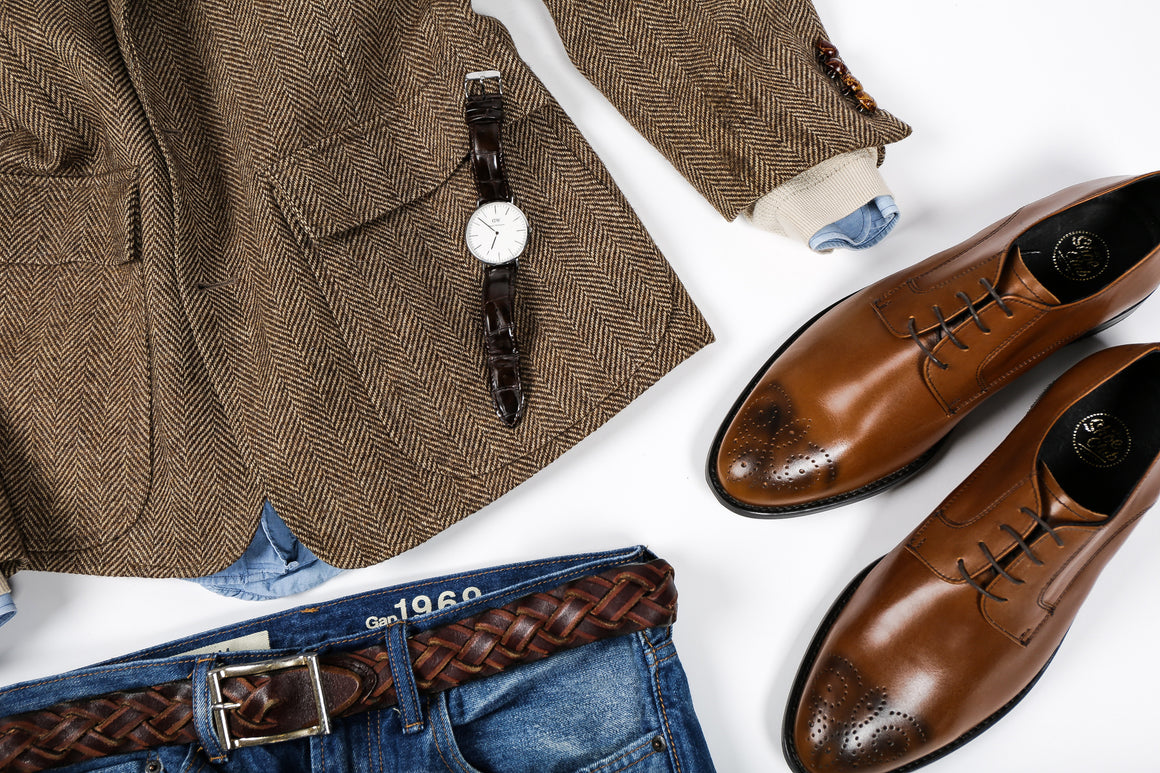Goodyear Welt Construction
Goodyear welted construction is the traditional method of attaching the sole to upper to achieve a mechanical join. The Goodyear construction takes its name from Charles Goodyear, the man who in 1869 invented a mechanized way of making the join. He, therefore, replaced the earlier completely hand-sewn method.
The shoe’s unique quality is that the sole can be replaced many times, allowing the wearer to build up the highly desirable “patina” effect achieved through years of wear. This method of construction and the material component quality used results in shoes that can last up to 20 years, or longer, depending on the treatment and condition of the uppers.
Shoe Construction
There are 174 processes and 210 operations that go into making a pair of high-quality Goodyear Welted shoes, and the thread is regarded to be one of the most critical components.
The Upper
The shoe uppers are cut from selected calf hides that are much softer than the soles and then pressed to a uniform thickness. It is crucial to keep the waste of leather to a minimum; thus, the uppers are cut carefully by a skilled craftsman. First, we cut, the tip, vamp, quarter, and tongue, then we punch the brogue’s holes (if the shoe design requires it) into them. Then we shave the edges of the uppers to prevent a thick layer forming where they overlap or fold. A piece of flannel, called doubler, is glued to the leather upper from inside before the tip is stitched to the vamp.
Later, the lining is sewn together and stitched to the quarters, once done the eyelets are applied from the inside. Finally, the vamp and the quarters are stitched together, resulting in the finished upper.
Shoe Assembly
Assembly starts by pulling the uppers over the last and tacking with nails; a canvas lip band of the sole is attached to the uppers (except for the heel area). The upper leather is tacked to the last, and a few temporary tacks are applied to the front before the upper edges are trimmed.
The Goodyear Welt is sewn to the upper leather, through the rib on the sole; a wooden shank is added for strength and stability, and cork filling is put between the inner and outsole, to provide some cushioning for the foot.

Next, the outer sole is cemented to the rest of the shoe under high pressure; the sole is attached by adhesive and then shaped to fit the rest of the shoe. After this, the thread is stitched to attach the upper to the sole. This can mean stitching through leather thicknesses of up to 2cms in order to hold the materials firmly together. Mass-produced shoes are sewn by machine, but bespoke shoes are usually sewn by hand.

Finishing the Shoe
Hot vibrating irons are used to pound the edge of the sole, to give a hard, rounded, smooth and polished surface; the leather heel is nailed to the sole, and the sole receives its final trimming. At this stage, the shoe construction is almost complete, but several finishing operations remain. The uppers and the welt are cleaned and polished; the soles are polished with wax, and the last is taken out of the shoe. The shoes are then polished by hand to give them a smooth shine and luster, then after a final inspection, the shoes are wrapped, boxed, and shipped to you.
A DETAILED VIDEO OF THIS COMPLEX CONSTRUCTION WILL BE AVAILABLE SOON...

